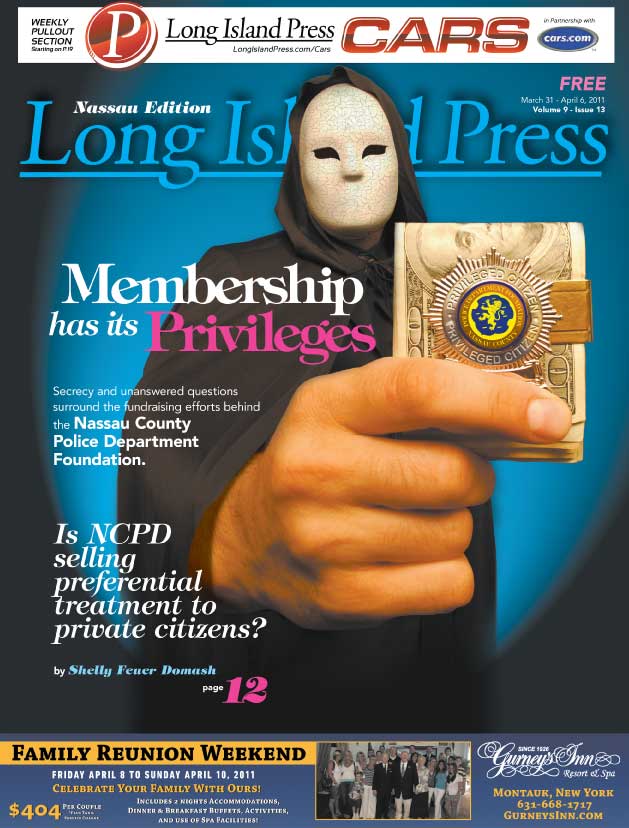By Michael Virtanen, Associated Press Writer
The corruption trial of former New York Senate leader Joseph Bruno revealed how box seats at a swanky race track, golf outings and other perks were the currency as labor unions and politicians kept public works dollars flowing, required union wages on taxpayer-funded projects, and sweetened pension benefits for unionized government workers.

Former New York Senate Republican leader Joseph Bruno talks to reporters outside federal court in Albany, N.Y., Monday, Dec. 7, 2009. A federal jury finds Bruno guilty on two counts of corruption and not guilty on five others after a landmark trial that exposed Albany's practice of influence peddling by lawmakers. (AP Photo/Mike Groll) (AP Photo/Mike Groll)
Mark Congi, Laborers Local 91 assistant business agent in Niagara Falls until his 2002 indictment for racketeering, testified at Bruno’s trial that the union’s late business agent, Michael Quarcini, was always looking for more state money for road construction jobs and knew where to go.
“He was always close to politicians who could help Local 91, starting with Nelson Rockefeller,” Congi said, referring to New York’s governor from 1959-73.
A dozen union officials denied under oath trading pension fund investments with the company that employed Bruno in return for his legislative support. But they described the Republican as a consistent friend to labor, one they could reach — or more often his top staff. Some were golf partners and guests at his two boxes at Saratoga Race Course.
“The interesting thing about the trial was how pervasive this creeping corruption was,” said Susan Lerner of Common Cause/NY. “It wasn’t limited to labor or business. This was equal opportunity corruption, which tells you it’s a corrupt system.”
For 14 years, Bruno controlled the flow of legislation in the Republican-controlled Senate and personally directed millions of dollars in annual grants, including several grants to unions. He retired last year. The 80-year-old was convicted last week of two fraud counts for denying New Yorkers his “honest services” by taking consulting money from a businessman with state interests and failing to clearly disclose those arrangements.
Bruno was acquitted of five charges, including the allegation that for more than a decade he improperly used his state influence to solicit union pension trustees to invest with Wright Investors Service, which paid him for helping land the accounts. Defense attorneys argued that Bruno’s support for working people never changed.
Attorney James Featherstonhaugh, a longtime lobbyist whose clients have included large public employee and private labor unions and now include the Wall Street giant Goldman Sachs Group and Pepsi Bottling Group, described a political landscape where unions generally do a better job than business interests.
“The Medical Society for example is pervasive. The trial lawyers, I’m happy to say, are pervasive,” Featherstonhaugh testified. “But the unions are equal to or exceed them all.”
Three days after Bruno was convicted, legislation to create a less-generous pension tier for new state hires required the blessing of major unions before lawmakers would approve. It included a promised early retirement incentive for unionized teachers.
“Private unions primarily tend to be more interested in economic development issues, things that will create jobs for their members,” Featherstonhaugh said. “They’re also interested in money. State money.”
Quarcini, the Laborers agent, once took Bruno on a helicopter ride over Niagara Falls, to see the sharply contrasting prosperity on the Canadian side, before a golf tournament, Congi said. The union was interested in seeing a casino built and staffed by union workers. Quarcini joked that if he didn’t get what he wanted, he’d throw Bruno from the helicopter, Congi said.
The Seneca Indian Nation eventually opened a casino in Niagara Falls, but without unionized workers.
Norman Seabrook, president of the New York City Correction Officers’ Benevolent Association, described how he successfully sought state measures over several years that gave those public workers benefits like New York City police and firefighters, who can get pensions after 20 years, as well as special supplements.
After testifying, Seabrook stopped near the defense table and gave Bruno a hug.
Gary LaBarbera, former president of Teamsters Local 282, testified that 70 percent of the work for its 3,000 to 4,000 members in New York City and Long Island was from civil and public works projects. “We were interested in the most robust capital budgets we could possibly have,” he said, as well as requirements that contractors pay the “prevailing wage,” with no advantage for lower-cost, nonunion bidders.
Samuel Fresina, former business manager of Laborers Local 190, said their interests included ensuring Transportation Department projects were approved and started, and getting prevailing wage requirements in Industrial Development Agency-funded projects. Fresina said he knew Bruno for 20 years, saw him sometimes at Republican cocktail receptions and first heard the once-powerful politician mention Wright while they played golf.
Howard Bennett, former president of Teamsters Local 294, testified they successfully lobbied for legislation to have companies instead of drivers ticketed for overweight trucks, but it took about three years. Bennett described “a fine relationship” with Bruno and his staff and told a grand jury last year he would have been concerned about future access if they’d terminated investments with Wright.
Lerner, noting her own working-class background, doubts money is wasted paying livable wages or a union member an extra dollar an hour. “That’s not where the fat is. What are the profit margins? Do you have extra people you don’t need?”
But pension funds, union and otherwise, have been “a tremendous honey pot. It is a real problem of oversight,” which federal rules are meant to address, she said.
Copyright 2009 The Associated Press




